Digression 4 - SUSTAINMENT - How Poor Maintenance Loses Wars - 2022, Ukraine Maintains
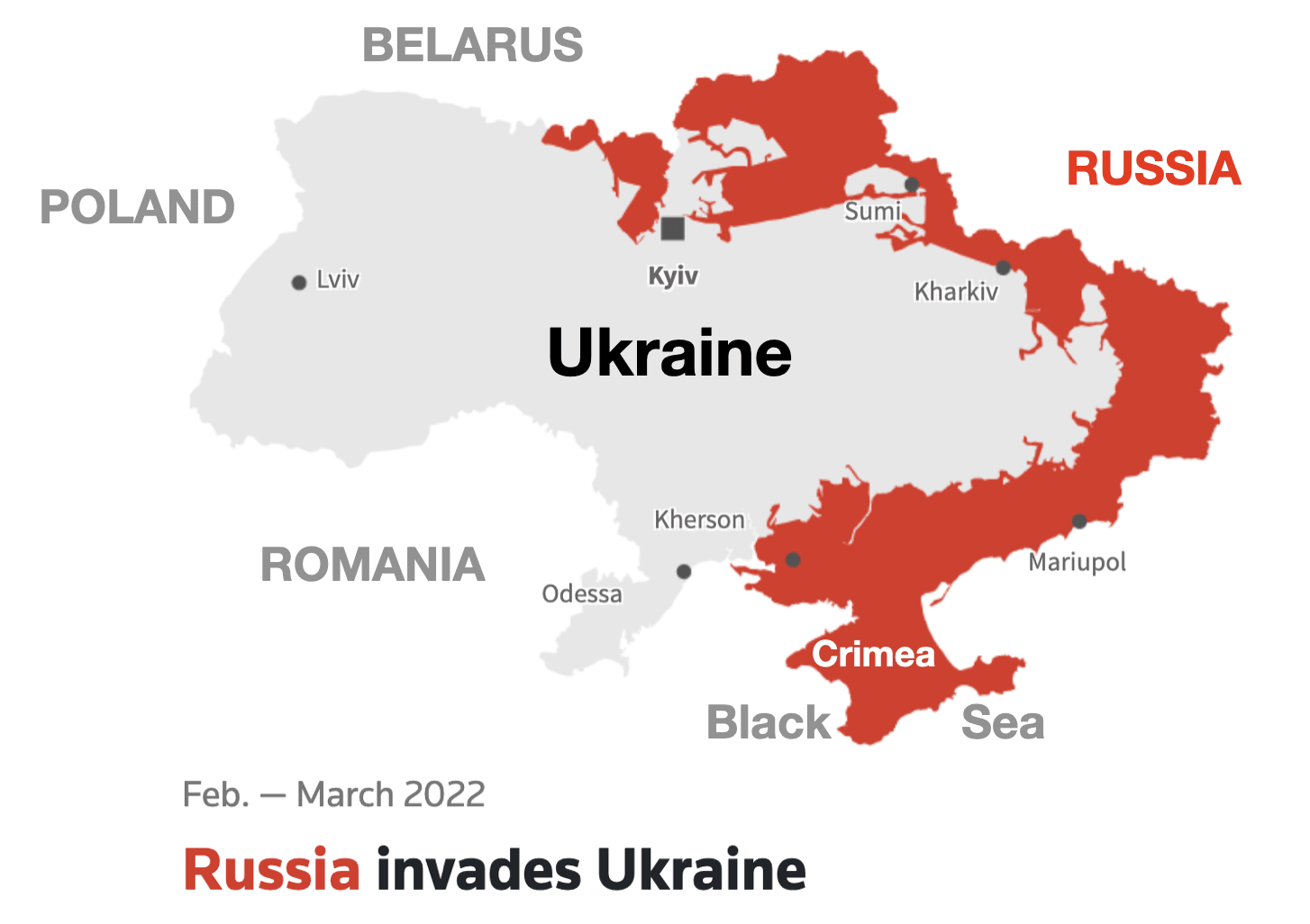
TTHE UKRAINE WAR that started in 2022 turned dramatically on sustainment issues, amid surprising echoes of the 1973 October War.
When Russian forces invaded Ukraine on February 24, 2022, they were confident that conquering the capital city of Kyiv and overthrowing the government could be done quickly with a massive show of force. Just eight years earlier, in 2014, they had crushed the Ukrainian Army in the Donbas region of eastern Ukraine. Senior officers in the invading force were told to pack their parade dress uniforms for the victory celebration in Kyiv.
Some outspoken American intelligence officials told the media they had the same expectation. The day after the invasion, America’s news was full of grim predictions such as: “Three U.S. officials have told Newsweek they expect Ukraine's capital Kyiv to fall to incoming Russian forces within days, and the country's resistance to be effectively neutralized soon thereafter.”1
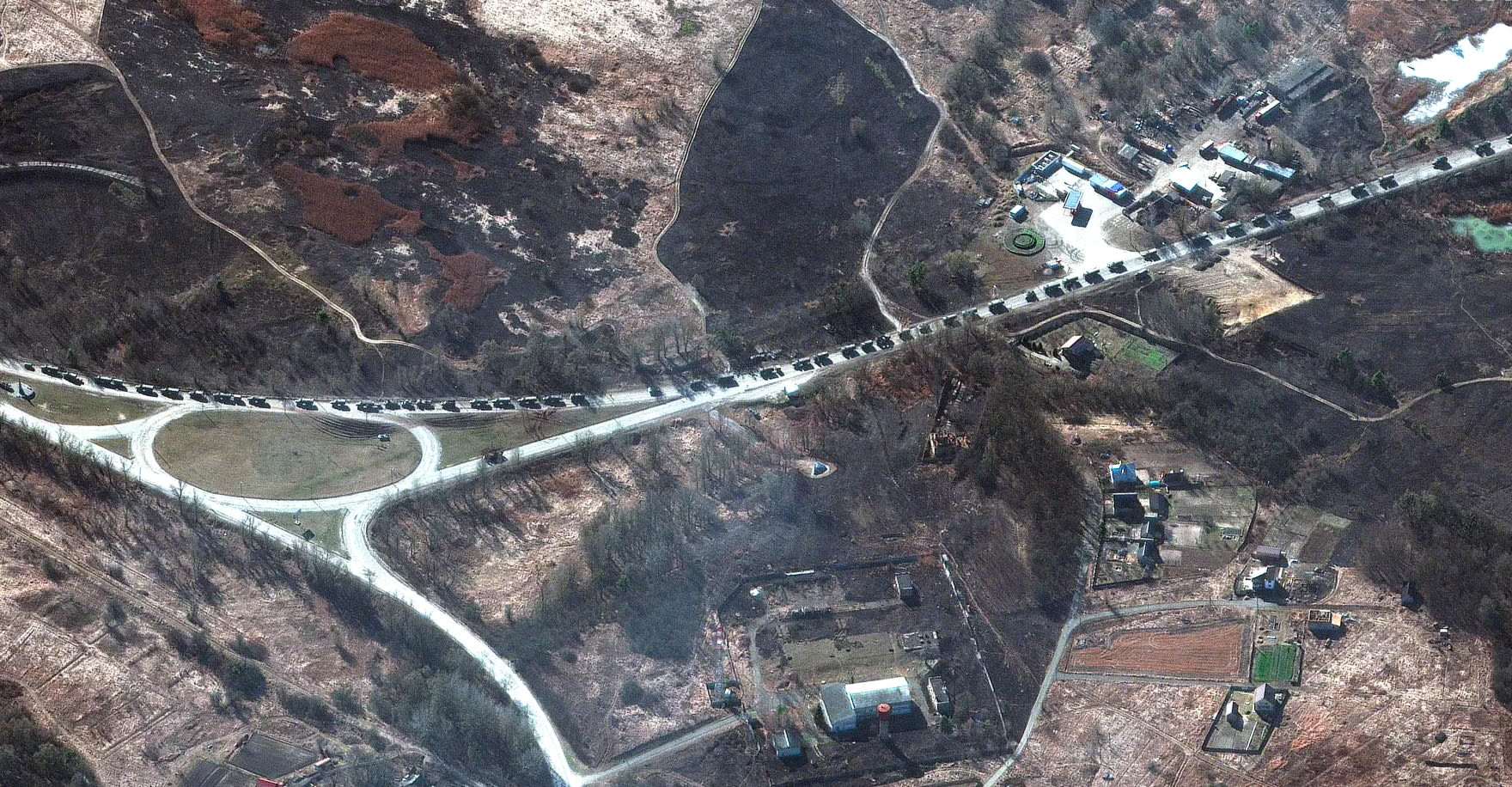
One photo, two different captions two days apart. Taken on February 28, this satellite photo showed part of a 40-mile-long Russian convoy of trucks headed toward Kyiv. The March 1st caption for the photo in Britain’s Metro tabloid read: “The sheer numbers of Russian troops are likely to crush the impressive Ukrainian resistance, officials have warned.” On March 3rd, the headline for the same photo in America’s AP News was a question: “Is stuck convoy in Ukraine a setback for Russia?”
The predictions were wrong. The experts had overestimated Russia’s competence and underestimated Ukraine’s. Not only was the war still going on a year later, Ukraine was winning. One assessment the following February declared:
Russia’s overwhelming power was anything but; instead of unleashing modern war on the Ukrainians, Russia relied on antiquated weaponry and command structures. Instead of taking Kyiv within weeks, Russian forces experienced major system breakdowns. Since then, Russia’s problems seem to have gotten worse. Putin has changed commanders like socks, equipment quality has degraded, and the number of casualties has skyrocketed.2Even more than in the October War of 1973, maintenance practices in the opposing armies were pivotal to the outcome. I’ll focus on two of Ukraine’s early victories—their successful defense of Kyiv in February and March 2022 and their Kharkiv counteroffensive against the Russian forces in eastern Ukraine five months later in September 2022.
The first sign of something deeply wrong with the Russian military came in early March with widely publicized satellite photos of a Russian convoy of trucks forty miles long permanently stalled on its way south from Belarus to Kyiv. A month later, the Russian forces were all gone, and Kyiv was safe from attack except by long-distance missiles. What happened?
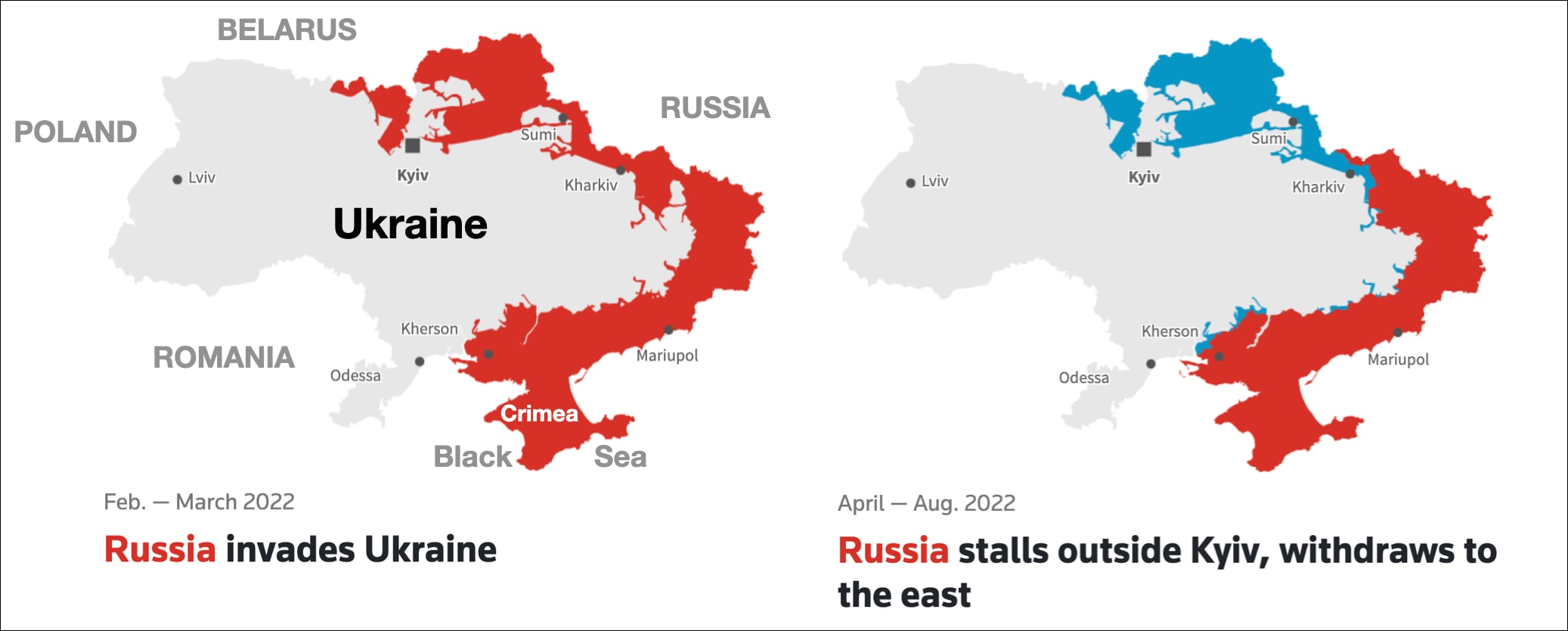
Ukraine’s first victory over Russia’s forces came in the north. The map on the left shows the area controlled by the Russian invaders in early March 2021. By mid-summer, Ukraine’s military had recovered all of the area shown in blue on the right. Ukraine is large—800 miles west-to-east, 550 miles north-to-south. It spreads an invader vulnerably thin on the ground.
Since mud season had begun, Russia’s trucks had to stay on the road. Ukrainian troops attacked vehicles at the head of the column to block the road, and the whole convoy came to a halt--sitting targets for further attack. Meanwhile the trucks themselves were deteriorating.
I found that a useful source to follow on Twitter was Trent Telenko, some of whose comments online were quoted by the Economist, the Wall Street Journal, and CNN. He was described as an expert “who spent 33 years at the Pentagon’s Defense Contract Management Agency and has studied Russian military logistics.”3 For CNN, Telenko explained: “Everything that an army needs to do its thing comes from a truck…. The weapon isn’t the tank; it’s the shell the tank fires. That shell travels by a truck… Trucks are the backbone of any modern mechanized military force, and if you don’t have them, you walk.”4 Half of the Russian troops in Ukraine are conscripts who serve only one year, and they are the truck drivers. Telenko told CNN, “You can’t really learn anything in a year about maintaining military systems.”
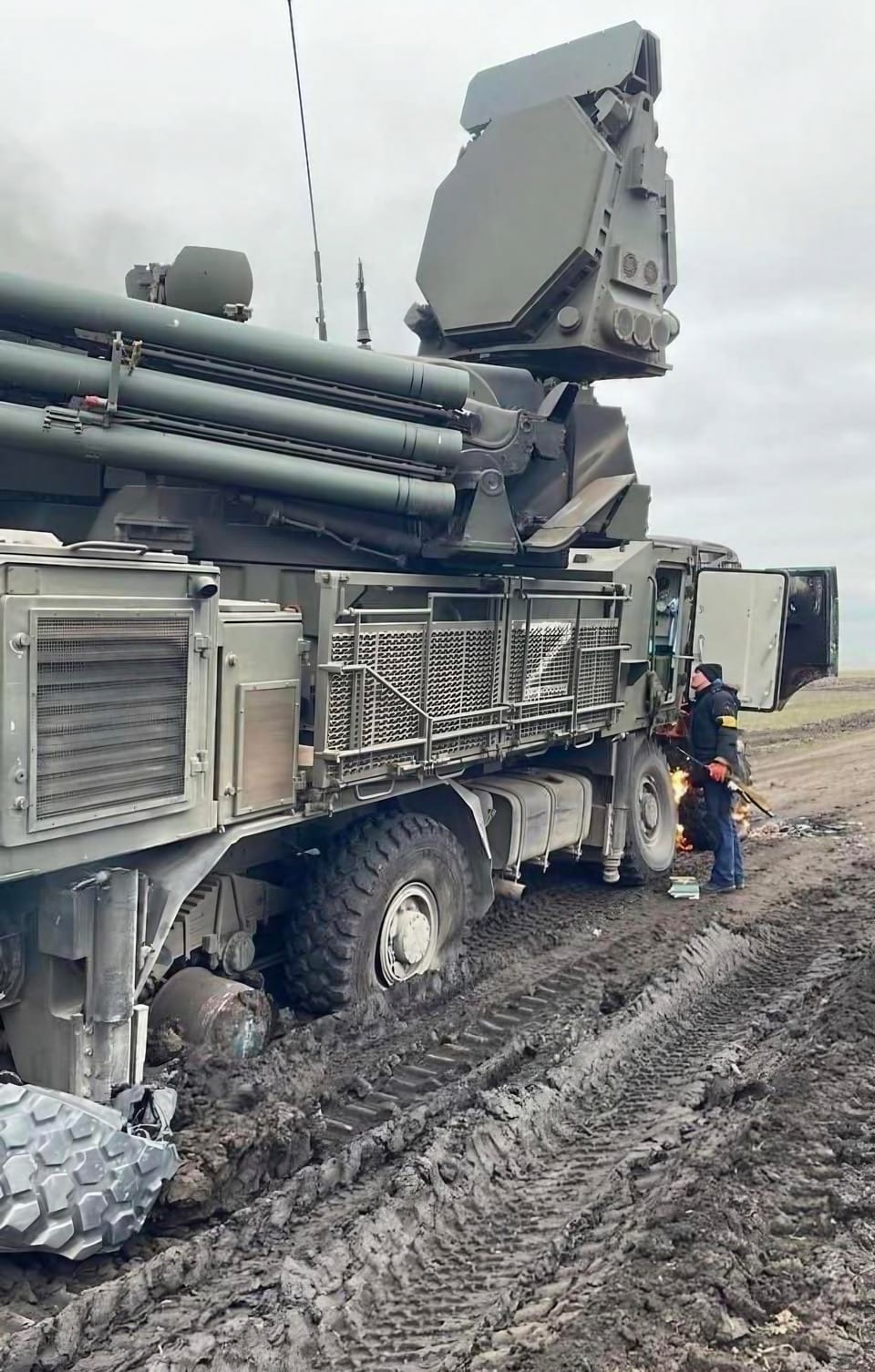
In the lower left of this photo, note the shredded tire. Consider that it is on a vehicle carrying one of Russia’s most advanced and expensive weapons systems, left abandoned on the battlefield in the first week of the war in Ukraine. What does that say about the state of maintenance in Russia’s army? Below, an intact Pantsir S-1 missile system.
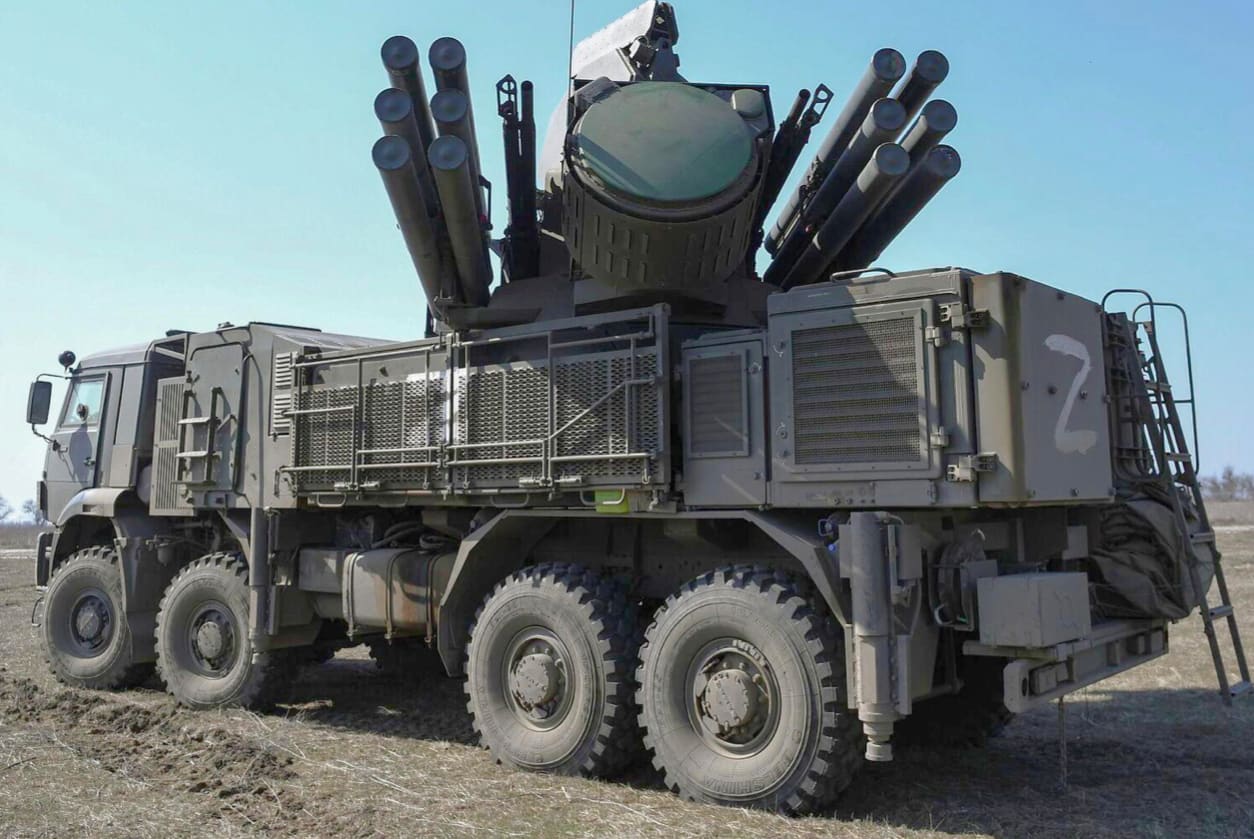
Doubts about the competence of Russia’s ground forces deepened with Telenko’s analysis on Twitter of a photo of a Russian multi-million-dollar, state-of-the-art, surface-to-air missile vehicle. It was stuck in the mud and had been abandoned by its crew. The photo appeared in a tweet by Trent Telenko on March 2. He wrote: “This is a thread that will explain the implied poor Russian Army truck maintenance practices based on this photo of a Pantsir-S1 wheeled gun-missile system's right rear pair of tires & the operational implications during the Ukrainian mud season.” (A “thread” on Twitter—later “X”—is a linked sequence of short posts.) In this and related threads, Telenko wrote:
Military trucks need to be [started] and moved once a month for preventative maintenance reasons. In particular you want to exercise the central tire air inflation system (CTIS) to see if lines have leaks or have insect/vermin nests blocking the system… and keep the tire sidewalls supple…. Direct sunlight ages truck tires…. When you leave military truck tires in one place for months on end, the side walls get rotted/brittle such that using a low tire pressure setting for any appreciable distance [such as for better traction in mud] will cause the tires to fail catastrophically via rips.Now look at the same Pantsir-S1 tire sidewalls after the Ukrainians tried to tow or drive it out of the mud. The right rear tire fell apart because the rips in it were too big for the CTIS to keep it aired up. No one exercised that vehicle for a year. There is a huge operational-level implication in this. If the Russian Army was too corrupt to exercise a Pantsir-S1, they were too corrupt to exercise the trucks & wheeled armored fighting vehicles now in Ukraine.Each mile traveled by a military truck in war is between 10 and 20 miles [of normal] wear…. Truck drivers abuse trucks because they don't want to die…. Every truck is being sent out in whatever condition, overloaded with ammunition. The engines are running white-hot and no one has checked the oil or other fluid levels, let alone done an oil change, in these last three weeks. The cumulative effects of all these factors leads to horrendous levels of Russian Army Truck fleet operational attrition.The US Army has professional NCO's [non-commissioned officers] that live, breathe and eat preventive maintenance as a religious catechism. And the US Army enforces rest periods for its truck drivers because it cares enough about having men & equipment for future operations. None of that is true for the Russian Army. Most of the time between 2012 and 2022 the Russian Army did not maintain their trucks. The Russians don't have a professional NCO Corps so they ARE NOT DOING IT NOW.5Several sources on Twitter identified the tires in the photo as cheap Chinese imitations of military-grade Michelin tires. How could so sophisticated a weapons system have such crappy tires? In the CNN article, a professor of strategic studies named Phillips O’Brien observed, “Often glamorous dictator militaries are good at the showy weapons, they buy the fancy aircraft and the fancy tanks, but they don’t actually buy the less glamorous stuff.”6 An article in Foreign Affairs spelled out how corruption had drained Russia’s military:
During the economic collapse in the 1990s, Russian President Boris Yeltsin’s government often proved unable to pay officers and soldiers alike, and corruption became institutionalized. Conscripts were frequently on the edge of starvation because their rations were sold off; theft, bullying, and ill discipline became rampant. Spare parts from vehicles, as well as anything from fuel to light bulbs, boots, and especially any cold weather kit, disappeared onto the black market. Corruption became even worse following Russia’s chaotic invasion of Georgia in 2008. Putin began throwing money at the armed forces. The waste on prestige projects encouraged contractors and generals alike to pad their bank accounts.7It wasn’t just shoddy equipment. The whole invasion was based on a wrong theory. Putin and his military advisors made the mistake of assuming that the Ukrainian army they faced in 2022 was the same army they defeated so quickly in 2014. They were shocked to discover on the battlefield that Ukraine had accomplished a radical military metamorphosis in just eight years. Books will be written about what Foreign Policy magazine called “the Ukrainian military’s slow-burn transformation from a Soviet army to a NATO-style outfit able to outfight, outfox, and out-equip its Russian foes.”8
In the years between Ukraine’s declaration of independence in 1991 and its failure to defend the Donbas and Crimea in 2014, its military had been systematically hollowed out by a series of presidents, ending with the pro-Russian President Viktor Yanukovych. His successor in 2014, Petro Poroshenko, was provoked by the Russian victories in Crimea and the Donbas to set in motion a sweeping overhaul of Ukraine’s armed forces. The reforms were accelerated in 2019 by President Volodomyr Zelensky, who elevated mid-rank General Valeriy Zaluzhny to be Ukraine’s first Commander-in-Chief of its armed forces. Zaluzhny was a convert to the West’s “mission command” philosophy that empowers subordinates to act with initiative and flexibility. It had become standard doctrine throughout NATO, which Ukraine was eager to join. By deploying it, Zaluzhny made Ukraine’s military capable of instant adaptivity on the battlefield, and that led to the stunning successes in 2022.
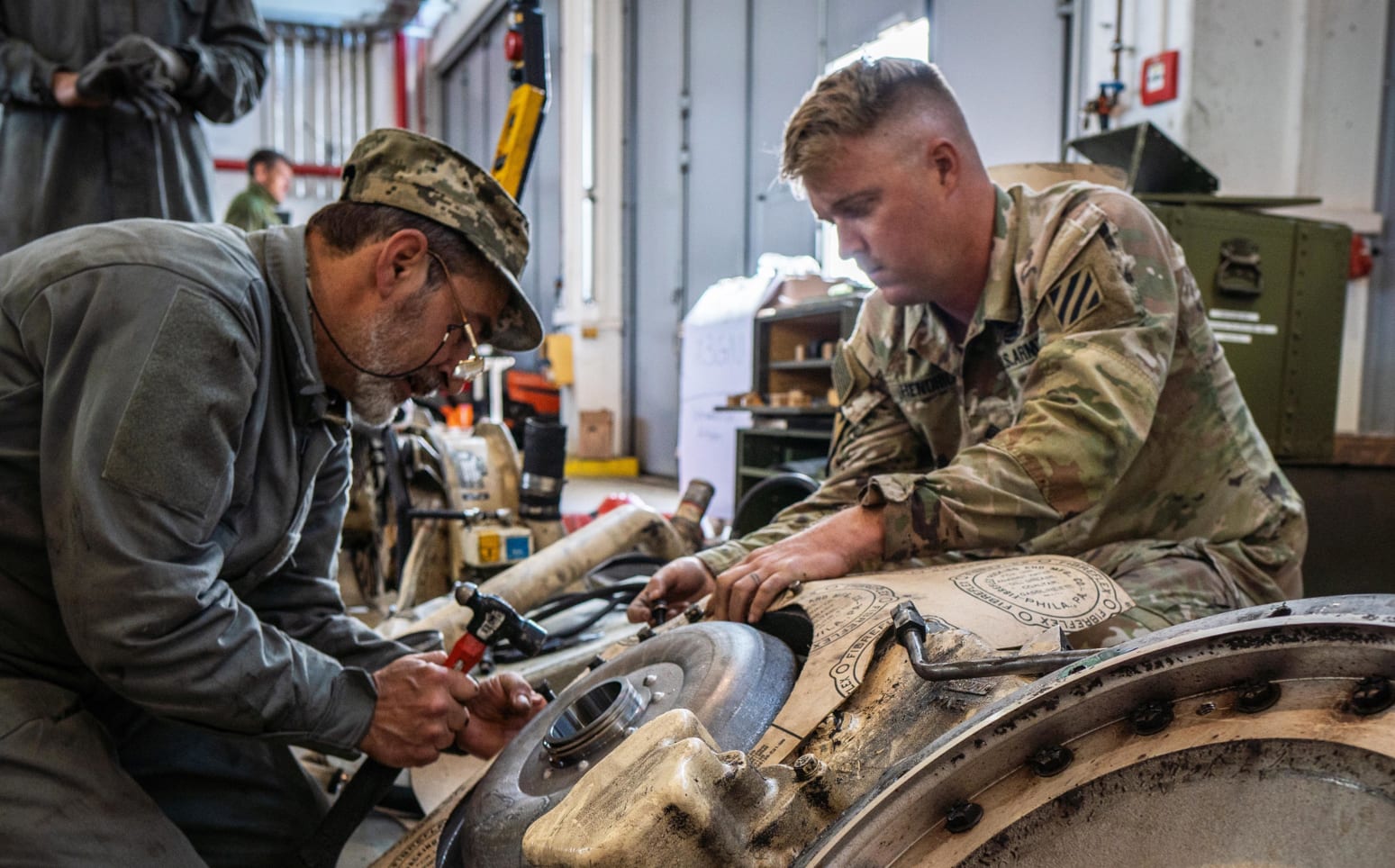
A Ukrainian soldier (left) in training to repair a US-donated M109 self-propelled howitzer—a long-distance cannon riding on tracks like a tank. He and his US Army trainer were photographed at an American training area in Germany, May 2022.
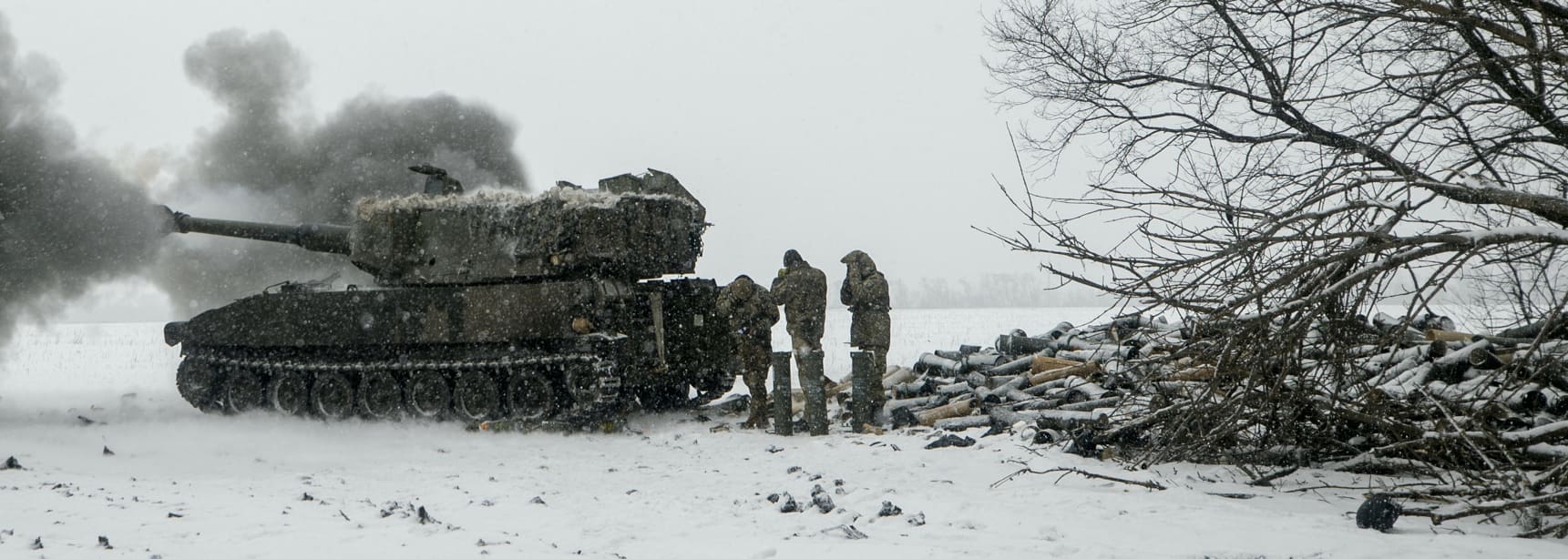
The M109 in action in eastern Ukraine, February 2023. The pile of spent shells shows how intensely the weapons are being used and why they require constant maintenance and frequent repair.
After the events of 2014, Ukraine and NATO opened up to each other. The former commander of U. S. Army Europe, General Mark Hertling, recalls, “In December 2015, [we] formally established Joint Multinational Training Group – Ukraine, where a multi-national team of Americans, Poles, Canadians, Lithuanians, and Brits began training Ukrainian battalions as combined arms teams.”9 At that time, according to the senior enlisted man in America’s military, Chief master sergeant Ramón Colón-López:
The NCOs [in Ukraine] were not empowered, they were not entrusted, and they were not properly trained or educated to be autonomous on the battlefield…. The government of Ukraine decided to go all in on an NCO development model.10Ukraine created three NCO training centers. The program scaled up quickly because the graduates were trained to train others in leadership and combat skills. The eight NATO countries that participated also introduced practices such as civilian control of the military, inspectors to root out corrupt officers, and proper sustainment for battlefield success.
As the fighting against Russians in the Donbas continued sporadically for eight years after 2014, promotion in Ukraine’s military was increasingly driven by merit—proven competence in battle—and Ukraine was developing the most combat-hardened troops in Europe. The NATO trainers discovered that they were learning as much from the experienced Ukrainians about modern warfare as they were teaching.
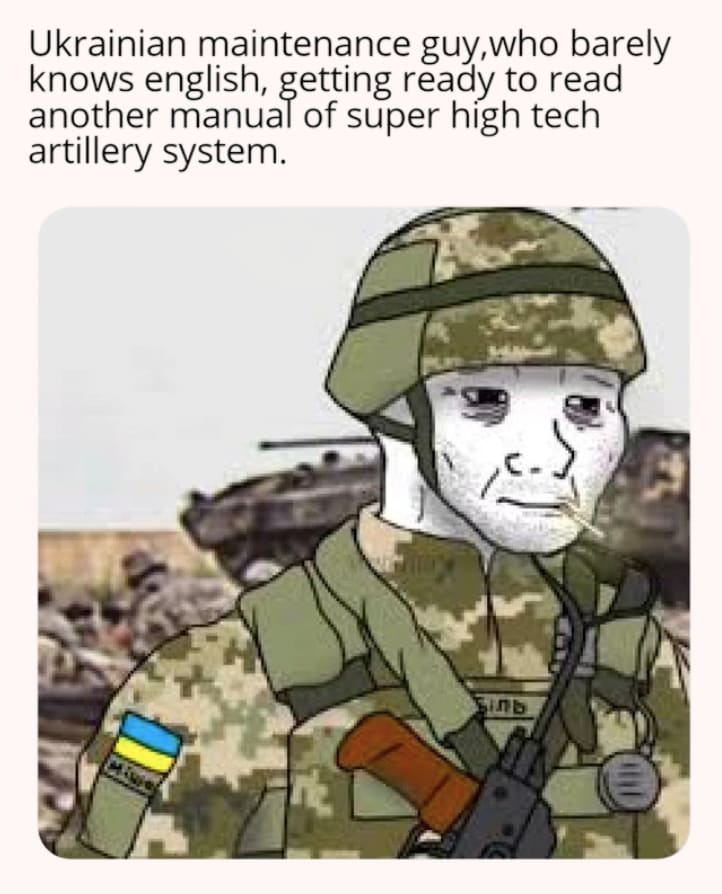
A meme that emerged among Ukraine’s devoted fans on Twitter/X
America’s military aid to Ukraine between 2014 and 2023 amounted to $32 billion. That included, the Defense Department reported, weapons systems such as:
the Javelin anti-armor system, the Stinger anti-aircraft weapon, unmanned aerial systems, grenade launchers, howitzers, helicopters, tactical vehicles, counter-artillery radars, armored personnel carriers, high-mobility artillery rocket systems, and millions of rounds of ammunition.11Ukrainian soldiers had to learn how to operate, maintain, and repair every one of the exotic systems, along with a variety of weapons donated by other NATO nations, and they had to do it fast. Some critics thought that was asking too much. The deputy chief of America’s Army Materiel Command responded, “The Ukrainian maintainers are very, very resourceful, and they are very good at keeping the weapons systems that we provide them in the fight.”12
Part of their resourcefulness was skillful use of the Web for “telemaintenance.” For every weapons system, a team of American experts in Poland advised the Ukrainian soldiers via an encrypted chat line, with the manufacturers on call when needed. The same went for other nations contributing weapons. One report noted:
Certain hard-to-get parts require the full spectrum of Ukrainian ingenuity. They use computer-assisted design to draw up designs, run them past U.S. specialists for guidance, and make the parts themselves.13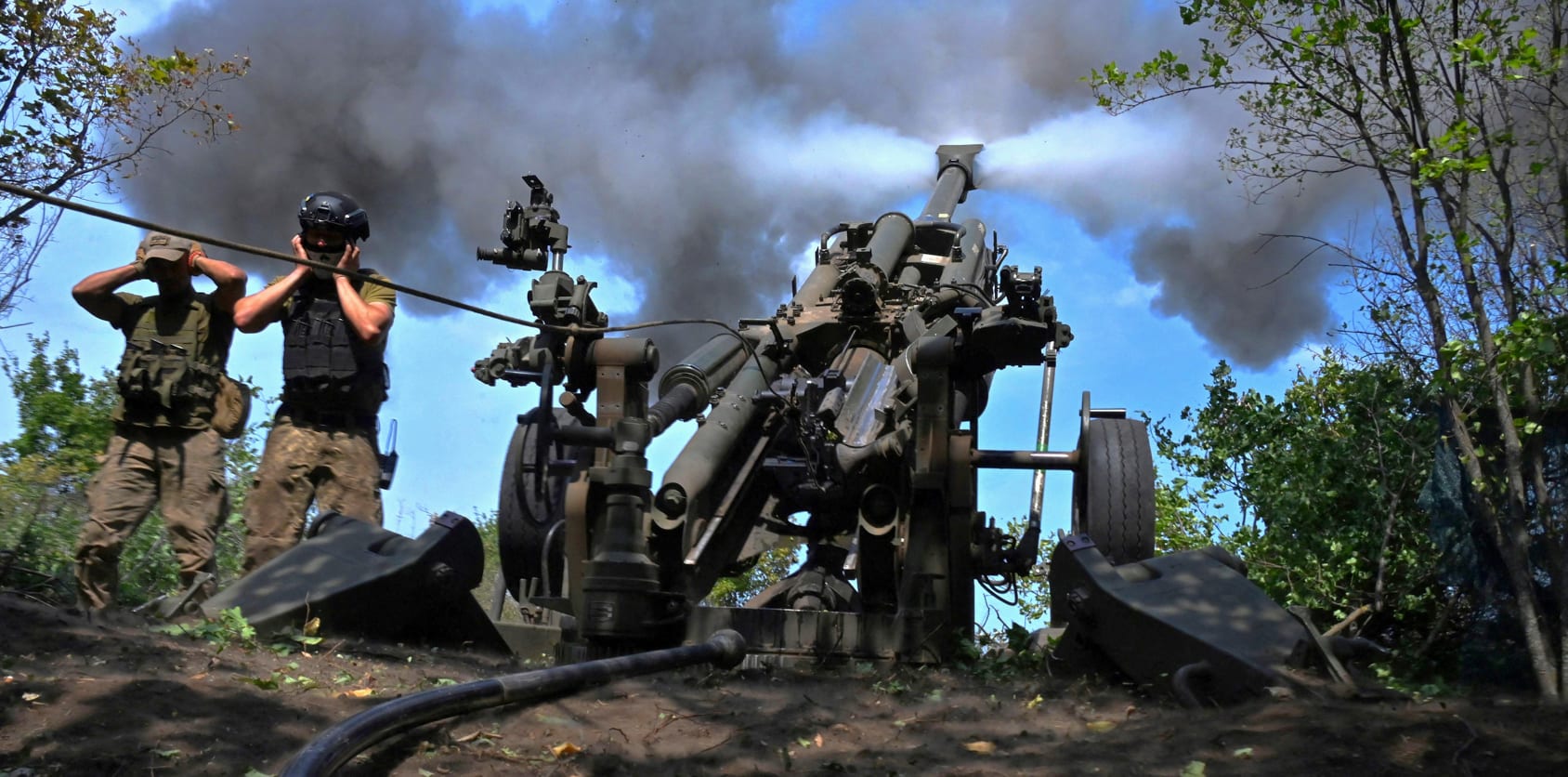
What does it take to make artillery effective? Photos of artillery always show the big gun being fired—BOOM!. They seldom show the elaborate choreography of sustainment behind the boom. How did this howitzer, a British-designed American M777 firing 155mm projectiles, get to the front for Ukraine’s counteroffensive in Kharkiv Province in September 2022? How did it get to Ukraine from overseas? What about the ammunition? Who trained the crew? Who maintains and repairs the weapon?
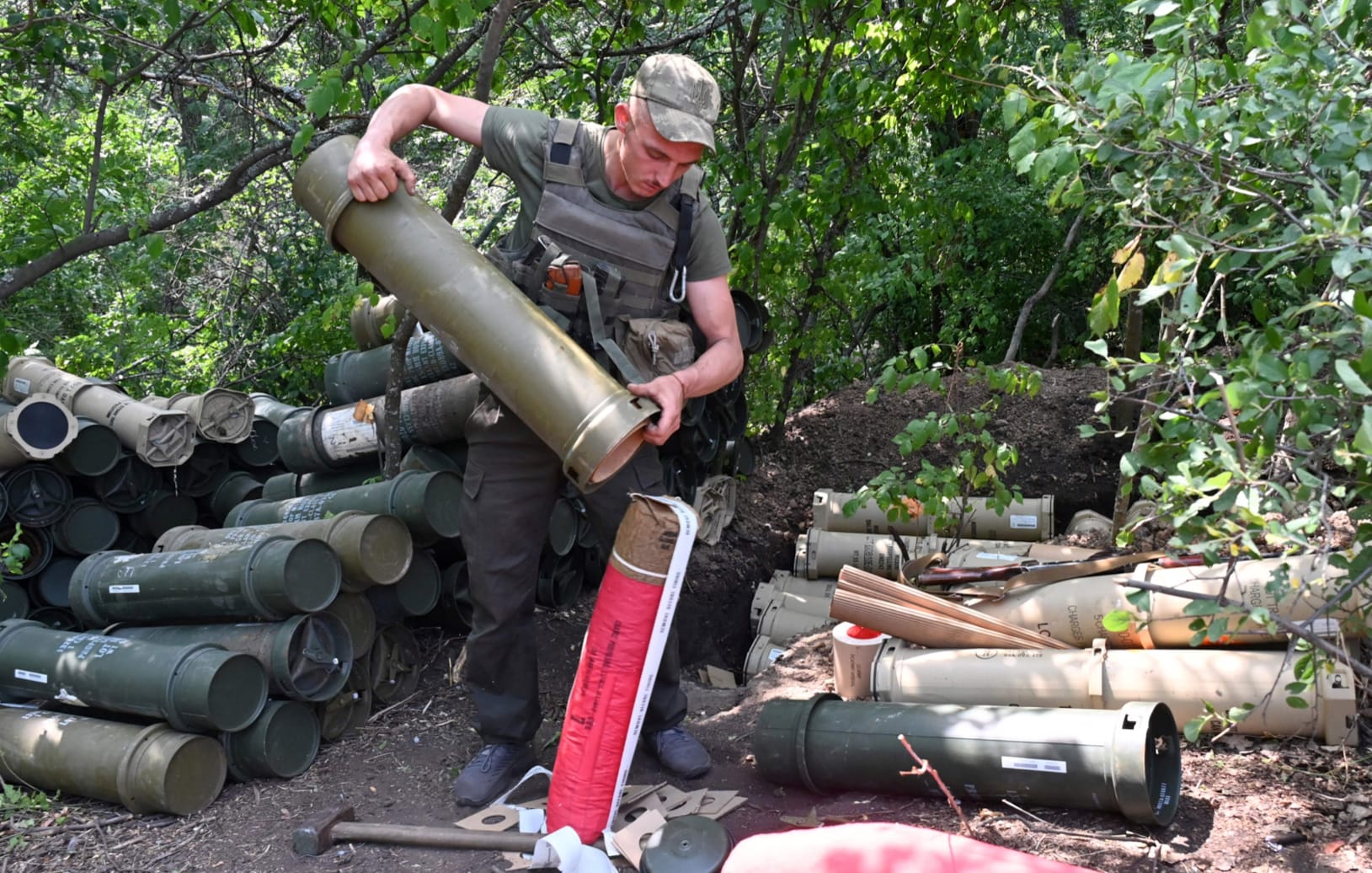
Projectiles for the M777 are loaded by hand and are so heavy, at 90 pounds, that the propelling charges (being prepared here) are loaded separately.
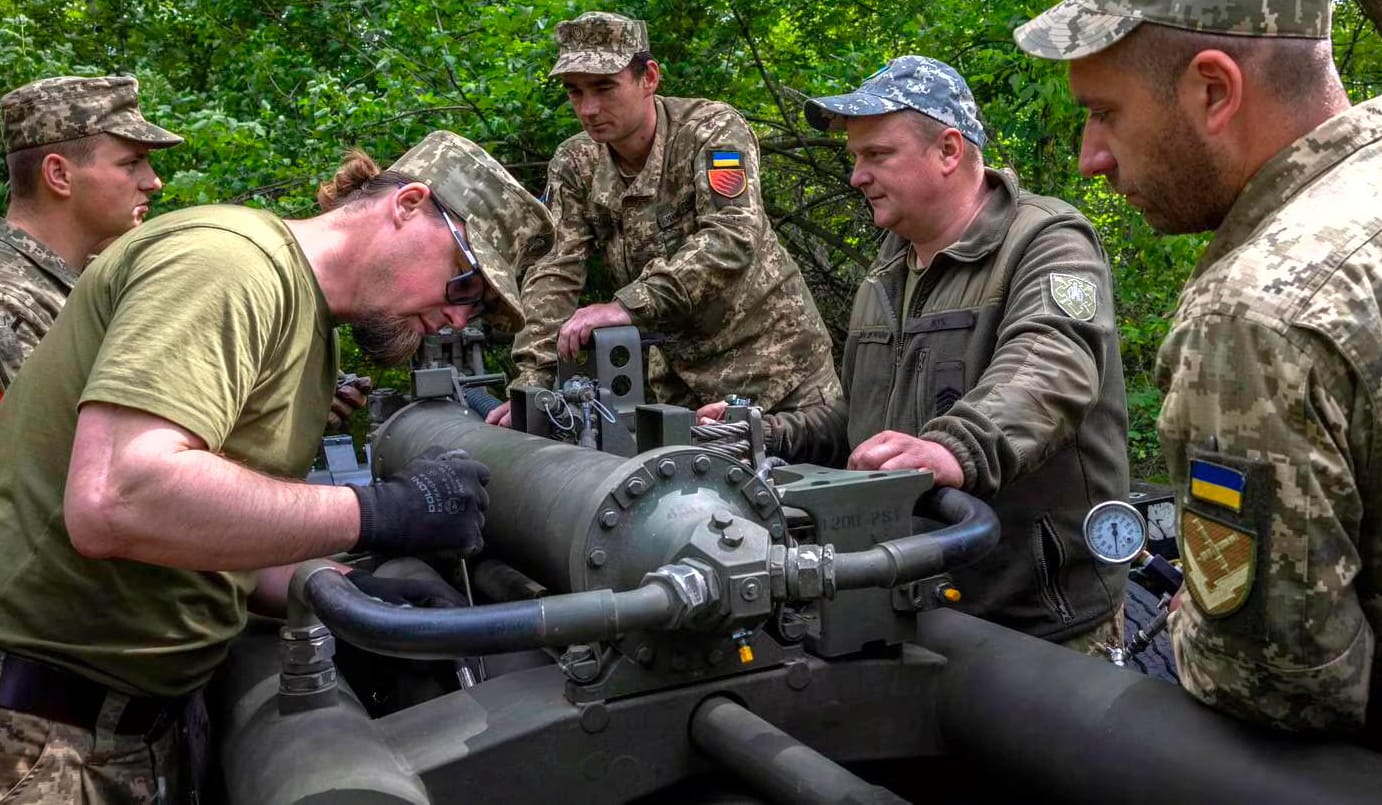
An M777 crew works on their gun. If a thing is used hard, it has to be maintained hard. The howitzers in Ukraine were fired so constantly that at any given time, about a third were out of action for repairs or to replace their barrels after firing 2,500 rounds.
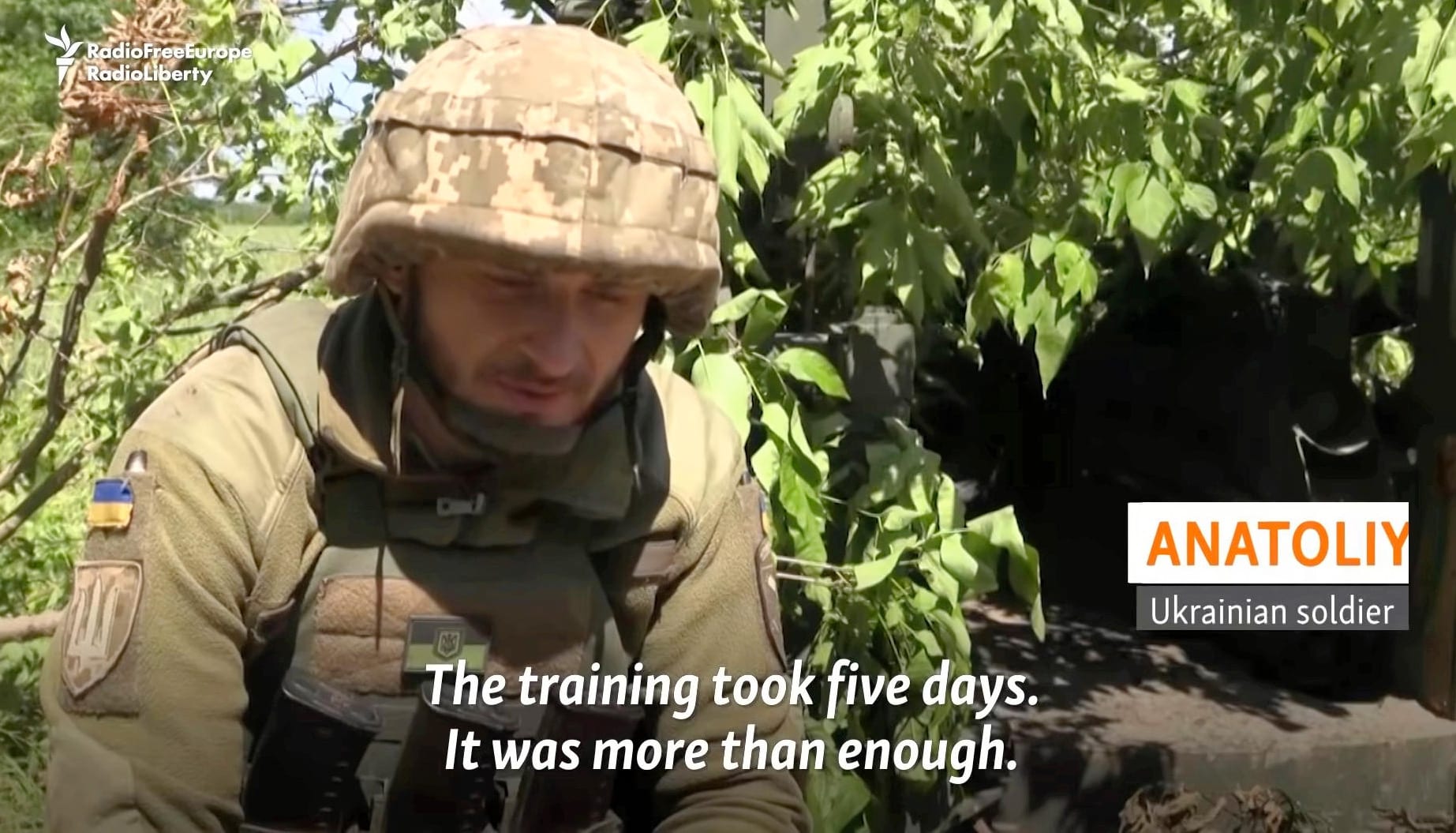
“Our instructors were surprised because we learned everything on the fly,” this M777 crew member told Radio Free Europe.
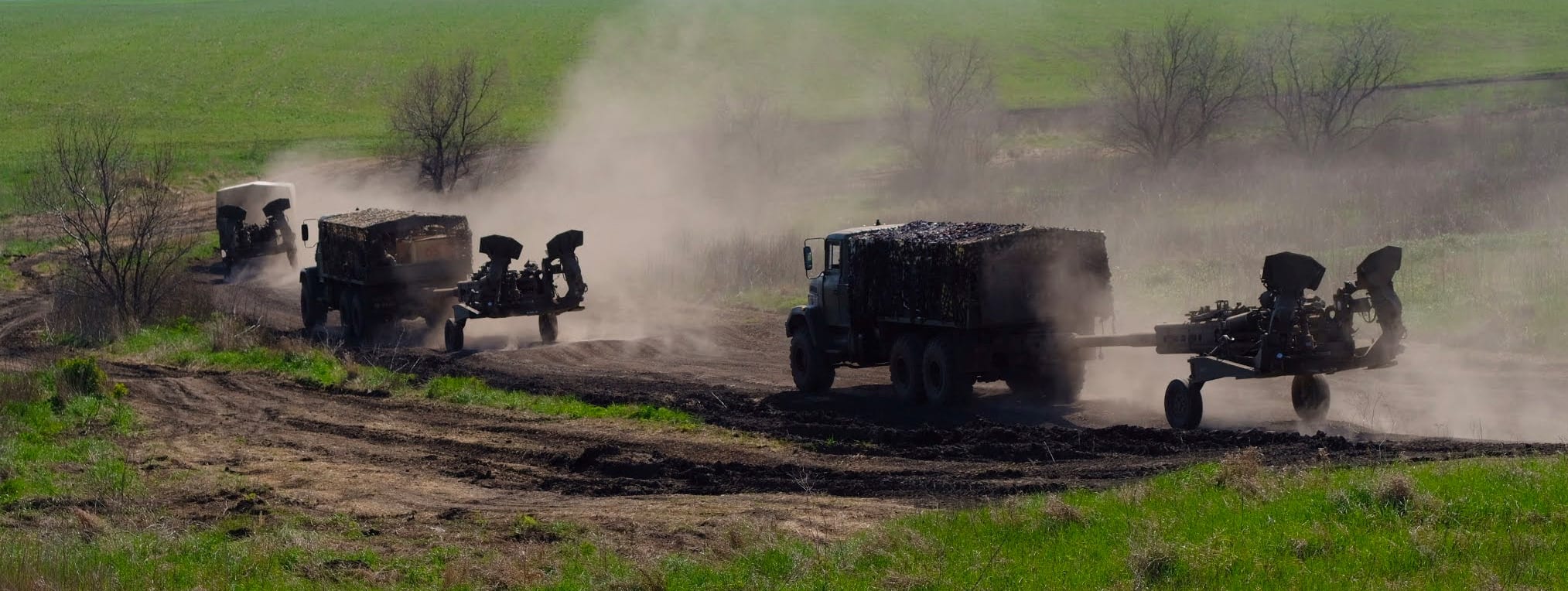
M777s are built partly of titanium, so they are light enough to be towed rapidly, and the 20-foot barrel has a convenient tow hook on the muzzle.
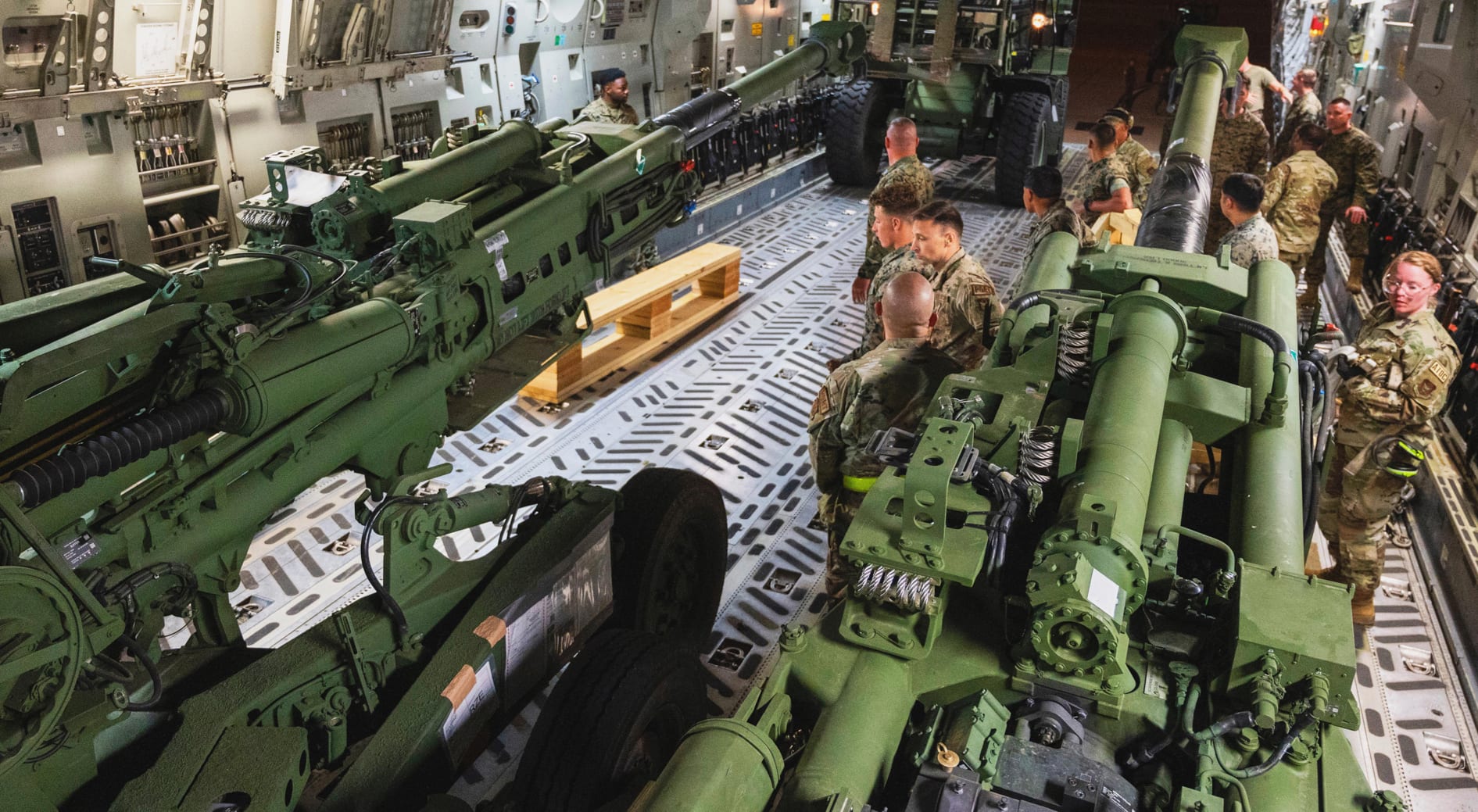
Long-distance sustainment is an American military specialty in part because all of America’s deployments in the 150 years since our Civil War have been expeditionary forces to distant continents. At March Air Reserve Base in California in early 2022, M777s are loaded onto a C-17 Globemaster III for delivery to Ukraine.
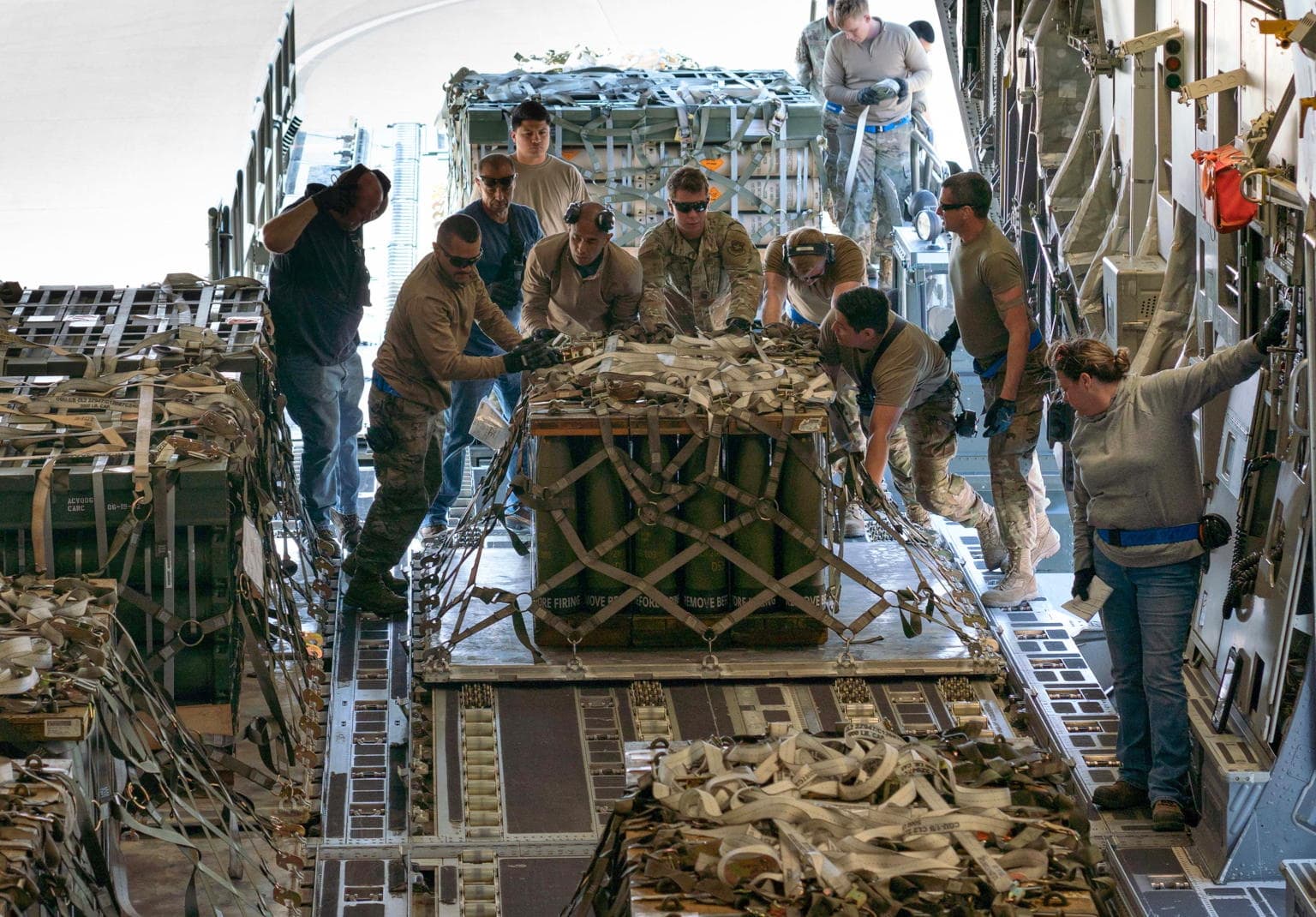
On another Globemaster at Travis Air Force Base in California, palletized munitions are loaded to be flown to Ukraine. The U.S. promised a million rounds for the M777s and other weapons.
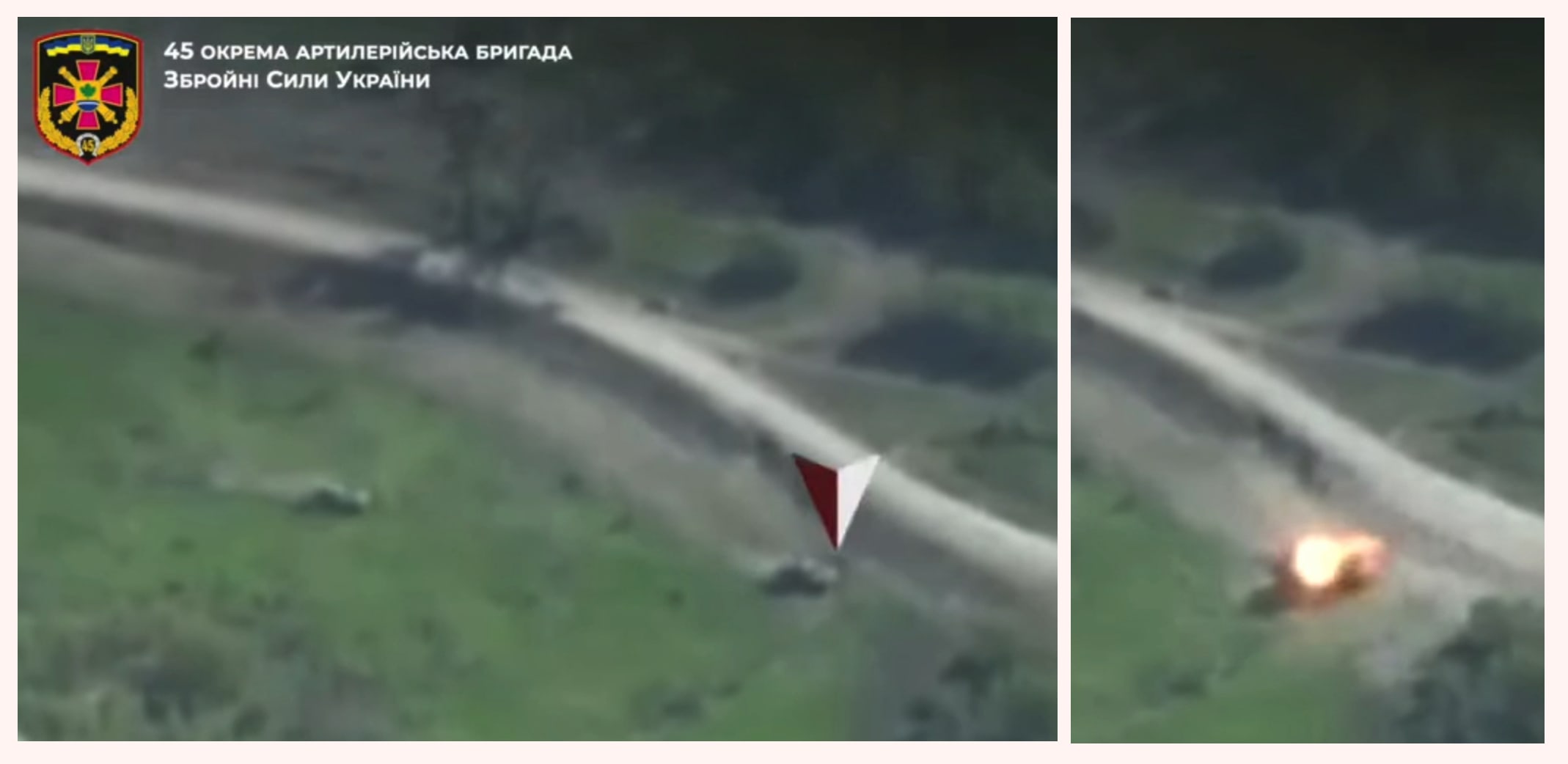
Artillery is about two BOOMs—one at the gun, one at the target. The point of the whole exercise is what happens at the target. In this case, a Russian armored personnel carrier was carrying troops to attack Ukrainian forces in the Kharkiv region. A quadcopter drone pin-pointed it for Ukraine’s artillery and recorded the result.
By September of 2022, enough powerful long-distance artillery provided by America and NATO allies was deployed at the front to be crucial to the success of Ukraine’s second major victory—its spectacular counteroffensive in Kharkiv Province that began on September 6. Ukraine’s 170 howitzers, along with sixteen M142 HIMARS (High Mobility Artillery Rocket Systems), were capable of precise strikes on targets such as ammunition depots, fuel storage tanks, and command centers up to 25 miles behind enemy lines. Bloomberg News reported: “Ukraine's gunners had learned to rapidly dismantle and reassemble the U.S. M777 howitzers. In its drive east from Kharkiv… Ukraine could bring its heavy guns forward in real time to perform the role of air cover.”14
Ukraine’s multiple breakthroughs and rapid advance bypassed so many enemy strongpoints that the Russian troops fled in panic, leaving their military hardware behind. Within a month, Ukraine had recaptured an astonishing 4,600 square miles of its northeastern territory, and its military had proved it could be as effective with a large-scale offensive as it had been in defending Kyiv.
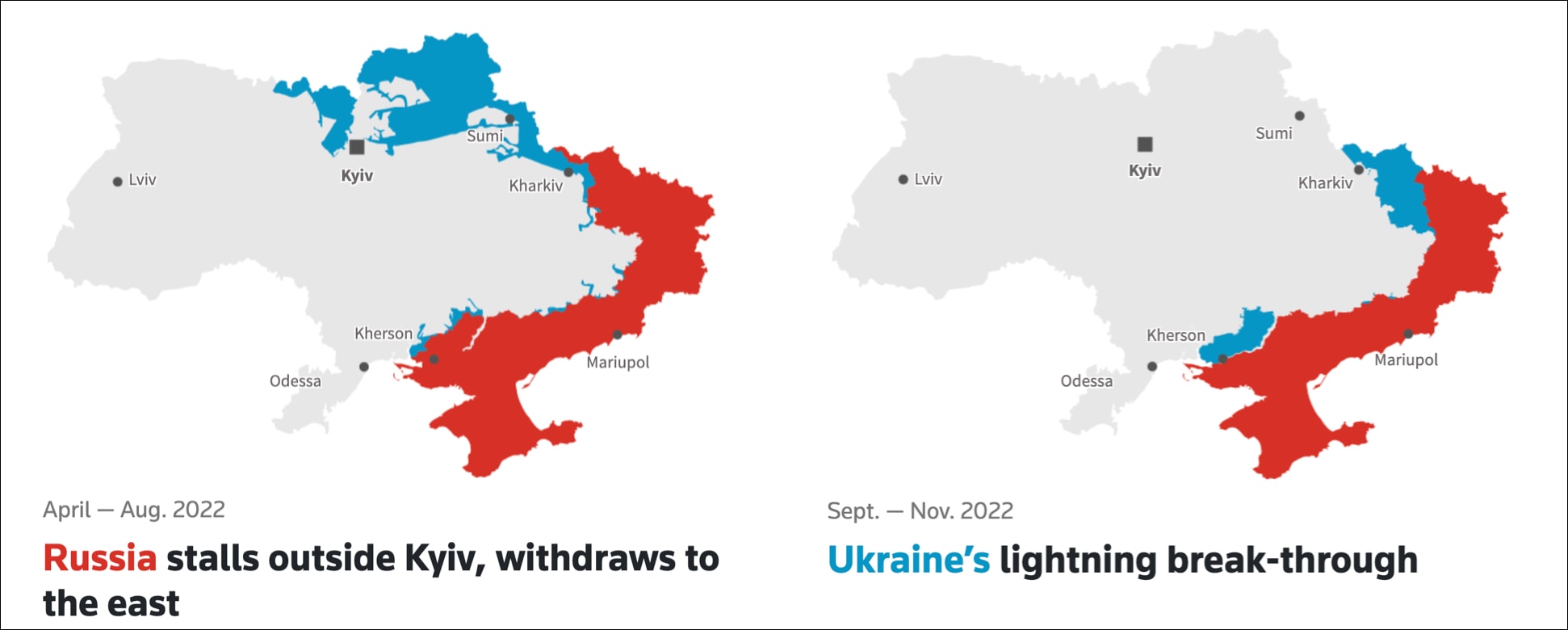
Ukraine’s second victory was in the east, shown on the map on the right. It was a one-two punch. Ukraine announced and initiated its Kherson counteroffensive toward Crimea in the south to draw Russian troops away from their northern defense lines. Once that was accomplished, Ukraine’s massive surprise attack in Kharkiv Province broke through easily.
A military analyst told the New York Times that it was “a very effective combined arms operation with tanks, mechanized infantry, Special Operations forces, air defenses, artillery, and other systems.”15 That level of coordination was made possible by Ukraine customizing a NATO “battle-awareness” platform called Delta. Projects of that sort were routine for a government dedicated to computerizing the whole nation, led by the newly-created Ministry of Digital Transformation headed by a 33-year-old named Mykhailo Fedorov. In a post on Facebook, Minister Federov described some of the platform’s features:
Delta provides comprehensive real-time battlefield understanding, integrating enemy information from a variety of sensors and sources, including digital map intelligence. Situational awareness tools, data processing centers, instant communication on the battlefield, cloud environments, and the mass use of drone armies… are the Army of the future.16The user end of the system is accessible from laptops and smartphones; the back end is described as “cloud-native” and “zero-trust secure.” The Wikipedia entry says Delta “integrates information from… troops, civilian officials, and vetted bystanders [as well as] sensors, intelligence sources, surveillance satellites, and drones—especially geolocated data, which it maps in real time, along with pictures of enemy assets.”17
It almost didn’t happen. When the Russians first attacked in February 2022, they jammed Ukraine’s satellite communications. On Twitter, Minister Federov publicly asked Elon Musk to have his company, SpaceX, provide Starlink services and terminals to restore Ukraine’s access to the Internet. Five hundred terminals arrived two days later, followed in short order by 2,000 more, along with solar panels and battery kits for use where electricity was down because of the war.
Fifteen thousand Starlink terminals were in Ukraine by July, uniquely immune to Russian jamming technology. Musk’s SpaceX provided the terminals and service for free or discounted, and further funding came from various governments and private individuals. (Starlink usually charges $1,500 for a terminal and $110 a month for the service.) A Ukraine platoon leader on the southern front told the Wall Street Journal, “Without Starlink, we would have been losing the war already.”18
(By early 2023, SpaceX’s chief operating officer, Gwynne Shotwell, had worked out a deal with the US Defense Department and CIA to provide 100,000 more Starlink terminals to Ukraine, along with military-grade service called Starshield for use by the US and allies such as Ukraine.)19
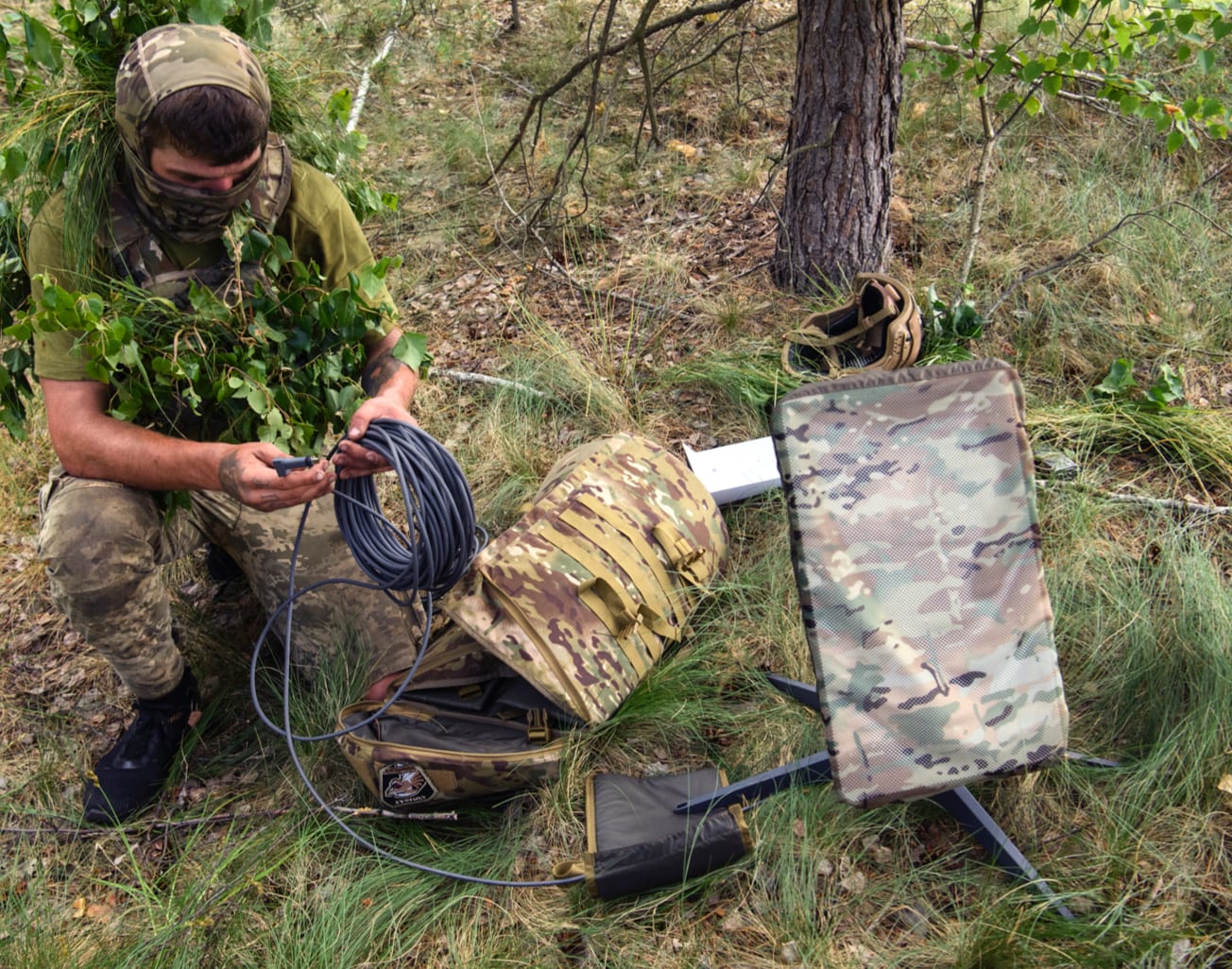
Communications sustainment was provided to Ukraine through SpaceX’s donation of tens of thousands of Starlink terminals and service. Terminals like this one can be small and mobile because the thousands of Starlink satellites are in low Earth orbit (340 miles up) instead of the usual 22,000 miles. This photo shows a mechanized brigade soldier on training exercises in northern Ukraine in June 2023.
Ukraine has a world-class, world-serving tech sector adept at solving problems with whatever resources come to hand, at digital speed. An article in the Wall Street Journal, headlined “Ukraine Has Digitized Its Fighting Forces on a Shoestring,” noted that:
One element of Ukraine’s success in innovation is how different military units and Ukrainian tech companies are working on their own new military technologies—a bottom-up approach that at times … resembles a string of Silicon Valley garages…. Volunteer soldiers are using their private-sector experience developing enterprise resource-management software for multinationals to automate payroll on the front lines.20Managing payroll is a classic sustainment task.
Ukraine repaired its armored vehicles—and Russia’s—in a similar fashion. Tanks are so heavily built that even severe battle damage is fixable “Every tank could be repaired, as long as it’s not been cut in half,” said an official at Ukraine’s tank factory.21 As with the Israelis in the October War, Ukrainian repair facilities were highly mobile and operated close to the front, with depots capable of major overhauling further in the rear or over the western border in Poland. Most were staffed by volunteer civilian mechanics. “A host of private companies,” reported England’s The Guardian:
have set aside their usual business to get in the game of refurbishing killing machines: the tanks, armoured vehicles, missile systems and other lethal hardware left behind. These operations are often funded through donations [to military aid groups such as] The Prytula Foundation.22A year into the war, Russia had lost over half the 3,000 tanks it started with. According to Oryx—the Dutch chronicler of battlefield statistics—the Russians lost 1,688 tanks. Of those, Ukraine captured 544, which meant that more than half of Ukraine’s operational tank fleet was made up of battlefield donations from Russia. Many were found astonishingly intact. The Washington Post reported that after the rout of Russian forces in Kharkiv, the Ukrainian
troops were dumbfounded at what lay before them: Tanks in working order, ready to be driven. Abandoned artillery pieces, ready to be fired. Fuel tankers “filled up to the eyeballs.” Tons of ammunition and light weapons.23The Russian crews were especially eager to ditch a line of dangerously obsolete tanks fielded in desperation—relics from the 1960s called T-62s.
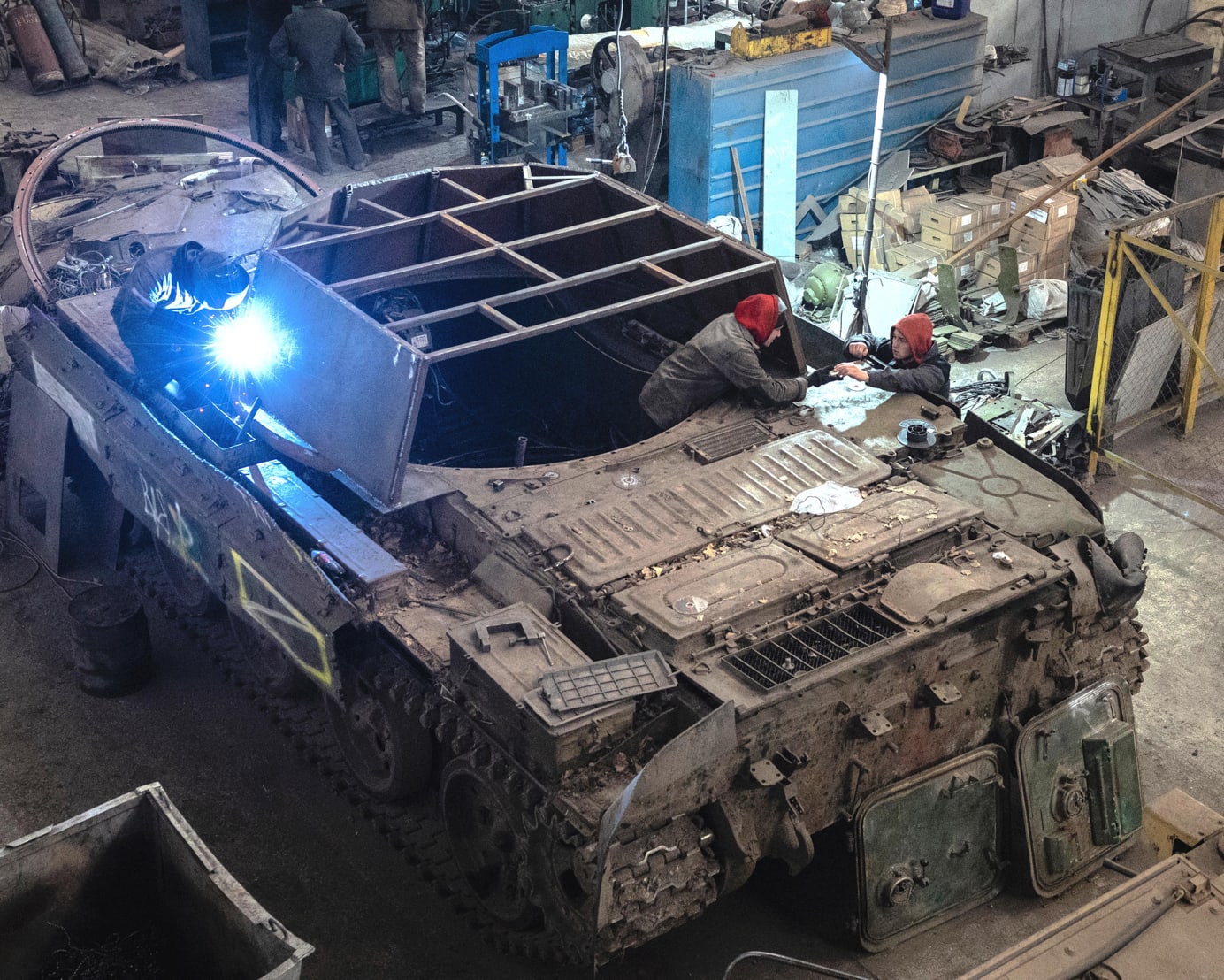
A captured Russian T-62 tank is converted to an armored recovery vehicle (ARV) for Ukraine’s use. The 8-ton turret and gun were hoisted off to be replaced by an armored winch and sometimes a crane to recover disabled tanks on the battlefield, including more Russian ones.
Ukraine captured at least 43 of the old T-62s. The question was what to do with them. The optics and gun were useless against modern tanks, but the well-armored hull and engine worked fine. A headline in Forbes magazine announced, “The Ukrainians Are Converting Worthless Russian Tanks Into Priceless Engineering Vehicles,” and noted:
A pitched fight between armored forces more often than not litters the terrain with recoverable tanks. So the army with the most responsive [armored recovery vehicles] collects the spoils: damaged tanks that the army can repair and send back into battle.24An outdated killing tool was transformed into a critical sustainment tool.
(A reminder of the human cost of these battles. A reporter asked a Ukrainian mechanic working on a damaged Russian tank if Russians died in it. The mechanic replied, “There were arms and legs in it. Lots of blood.”)25
Ukraine’s tech-forward sustainment mindset extends to the citizenry as well. In 2020, Ukraine began building an “e-government” tool called Diia. It is a Web platform and a mobile app promoted as the “State in a Smartphone.” By 2023 fully half of Ukraine’s 36 million residents were using the system. After Russia’s invasion in 2022, it was used as a tool for citizens in the occupied parts of Ukraine to report the precise location and nature of enemy activity, and that information fed into the Delta battle-awareness system.
Just as Ukraine’s Delta platform was showing the world how to manage warfare digitally, Ukraine’s Diia system was doing the same for running a government. With Diia, Ukrainians have the world’s first wholly digital passports, driver’s licenses, car registration, and vaccination records. They have direct access to 50 government services, free of paperwork. Registering a new company can be done in half an hour. To further enrich the process, Ukraine created a special legal and tax domain for information technology companies in a virtual hub called “Diia City.”
What can be learned about maintenance mind from all this? One thing that seems clear is the need to examine its opposite—neglect mind. Examples of both were evident in individuals in my tale of the 1968 Golden Globe race of single-handed around-the-world sailors. The formal winner, Robin Knox-Johnston, had maintenance discipline and skills trained into him by England’s Merchant Marine. The informal winner, Bernard Moitessier, gained his discipline and skill from extensive single-handing experience, including getting wrecked twice. The race’s biggest loser, Donald Crowhurst, had neither maintenance training nor much sailboat experience, and he was delusionally optimistic. His neglect mind was part laziness and ignorance, part surrender to fantasy.
Maintainers are realists.
My accounts of the two wars in this Sustainment digression show maintenance mind versus neglect mind at the level of institutions and societies. Ukraine’s army and culture were defending against Russia’s army and culture in 2022 just as Israel’s army and culture defended against the Egyptian army and culture in 1973. The 2022 war demonstrated a rare case of rapid institutional and cultural change. Ukraine’s military in 2014 was basically Soviet, with Soviet-style neglect of its equipment. By 2023, Ukraine’s military was teaching NATO how to be modern.
History shows that many battles are won by the side that can act and respond with the greatest speed. Wars, however, are only sometimes won by speed. More often, they are won by whichever side can doggedly outlast the other. “Combat support” helps win battles, but full-on “sustainment” is required to win a war. Sustainment comprises everything it takes to ensure prolonged endurance of capability. Thus the war in Ukraine is, in part, a contest between Russian sustainment and NATO-supplied sustainment.
Maintenance is so pervasive and labor-intensive in all armed forces that enlisted soldiers do it, not officers. If there is too much social distance between officers and troops with nobody connecting them, maintenance will always be low-status and poorly supervised—a perfect formula for institutional neglect mind. Egypt had it and reportedly has it still. Russia, with its doctrine of treating equipment and soldiers as expendable, has it at a vast scale. The proven solution is a cadre of highly experienced NCOs who have the respect of both officers and troops and are empowered within the mission-command philosophy to take a strong leadership role. They are the ones charged with overseeing and enforcing maintenance. They teach the whole armed force to take maintenance seriously.
In both Israel and Ukraine, the civilian population and the military were closely linked. The resulting national coherence was crucial for defending their homelands against invasion. In both wars, Israel’s and Ukraine’s forces were greatly outnumbered and outgunned. To defend their country, each had to innovate rapidly while mending all the equipment they had and everything they could capture.
That they did.
(End of SUSTAINMENT Digression)
___________________________
(This is the 3rd segment of 3 in the SUSTAINMENT Digression. The first is “2022, Israel Maintains.” The second is “Sustainment - the Concept.”)